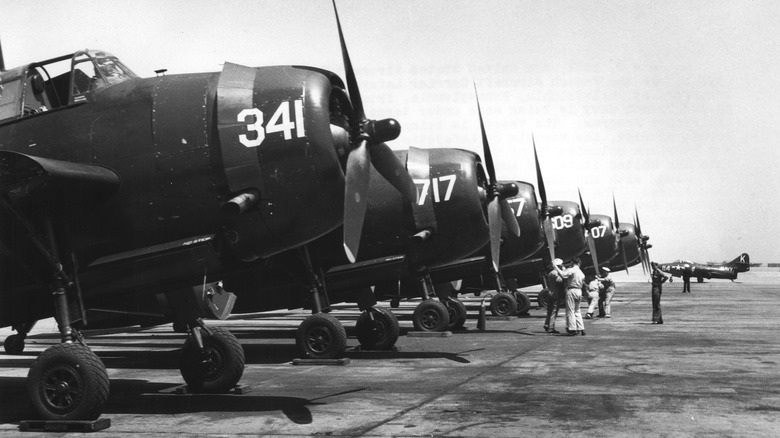It may surprise you to learn that the Navy’s very first aircraft carrier took to sea more than a century ago, with the US Department of Defense commissioning the construction of the vessel in March 1922. It may also surprise you to learn the ship didn’t actually start its journey as an aircraft carrier, and when the ship took to sea in 1913, it did so as a cargo vessel under the name Jupiter.
Humble origins aside, the repurposed ship was a clear predecessor to the floating fortresses we’ve come to know in modern aircraft carriers. In its early days of service, the USS Langley served as an essential tool for the Navy to develop the techniques and tactics that would become standard operating procedure in the realm of early naval aviation. Though the USS Langley broke new ground in the realm of seafaring aviation, by the 1930s, the Navy was dramatically rethinking their approach to aircraft carriers, essentially making their first build obsolete.
The Navy again repurposed the Langley, shortening its flight deck and outfitting it with the tools and crew needed for it to serve as a seaplane tender. The Langley was serving in that capacity during World War II when, in February of 1942, Japanese forces attacked it en route to the Indonesian island of Java. Alas, the vessel didn’t survive that combat mission, with the remains of America’s first aircraft carrier still residing in the murky depths less than 100 miles off the coast of Java.
The USS Langley was ultimately scuttled by US forces off the coast of Java

Print Collector/Getty Images
Circling back Jupiter’s days as a collier vessel, the ship’s massive size and design made it ideal for transporting the almost unfathomable weight required of what is essentially a floating airport. Likewise, its large cargo hold provided ample space to repair and stow away planes when not in flight. As for the conversion, Naval engineers essentially built a runway to the top of Jupiter’s hold, leading the crew to affectionately nickname the redesigned ship, «The Covered Wagon.»
The ship was, of course, properly renamed for Samuel Pierpoint Langley, an astrophysicist and aeronautical pioneer who worked to develop a manned aircraft in the earliest days of aviation. Though The Wright Brothers famously beat Langley to the skies, he continued the work of developing the then new science of astrophysics throughout the late 19th Century, and remained a major player at the Smithsonian Institute until his death in 1906.
As for the game-changing vessel bearing his name, the Langley was ferrying a small fleet of Curtiss P-40 «Warhawk» fighter planes to aid in the Allied Forces’ defense of Java when it was attacked. With assistance from its escort destroyers — the USS Whipple and USS Edsall — the Langley was initially able to survive the Japanese bombing. However, the ship sustained heavy damages during the battle and was no longer able to serve the Navy’s needs. It was ultimately decided that the Langley would be scuttled at sea, with the Whipple sending it to the watery depths via a barrage of artillery shells and torpedoes.